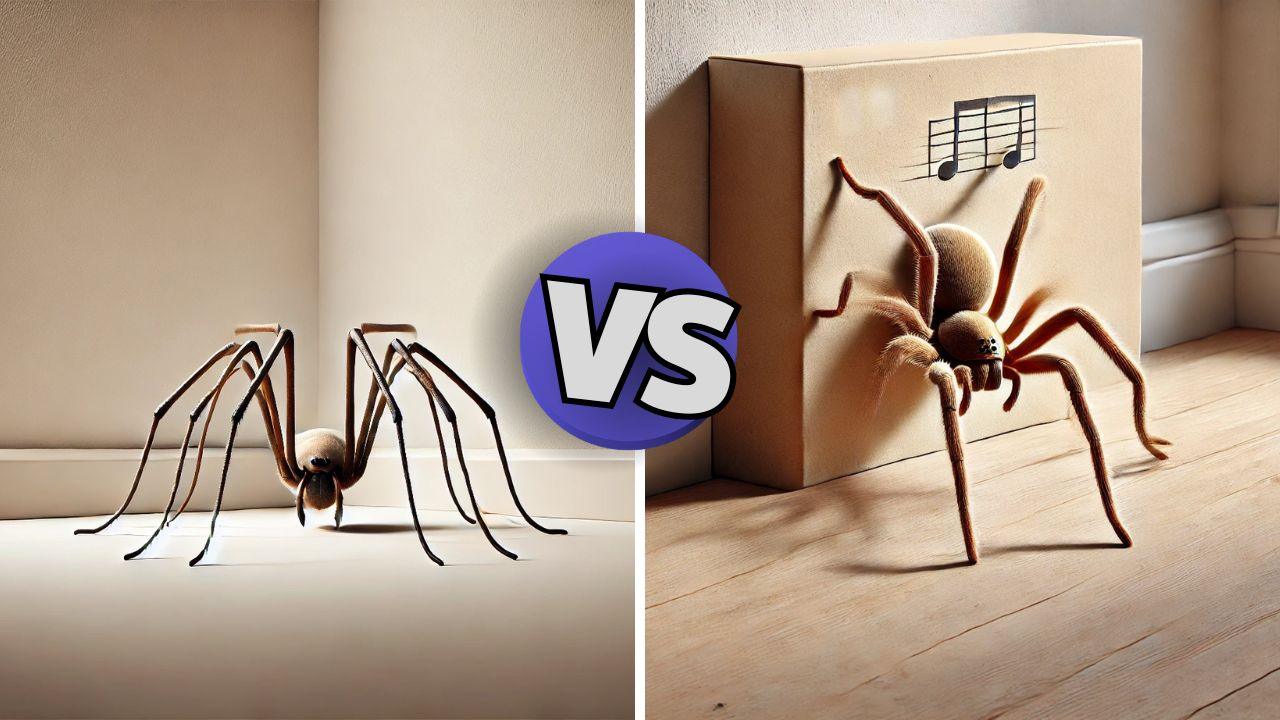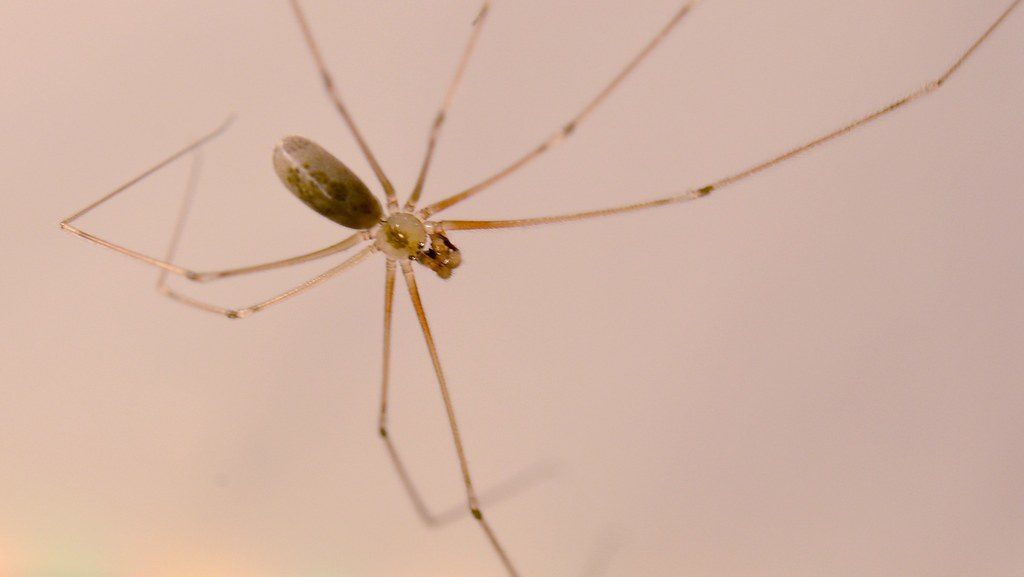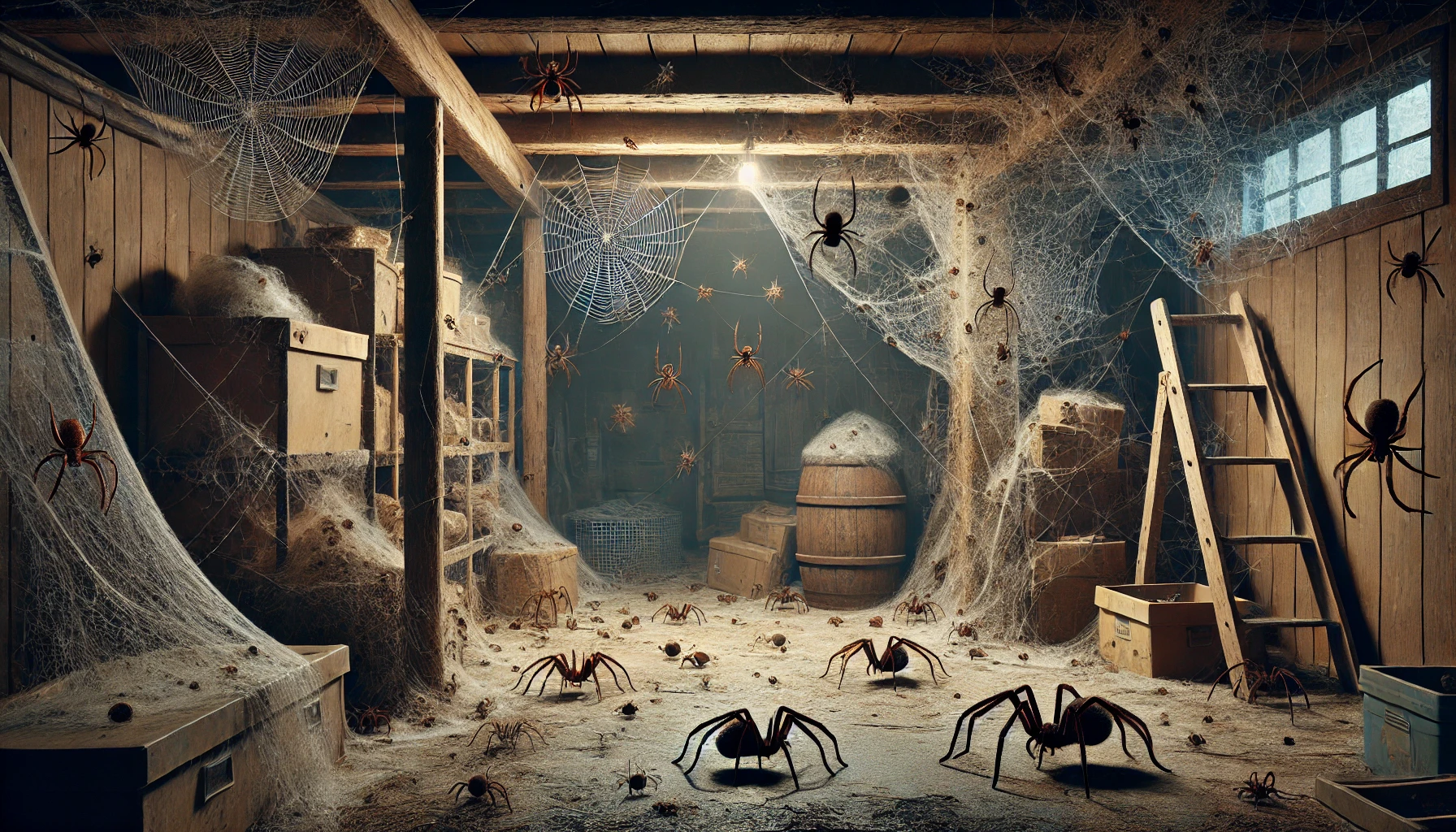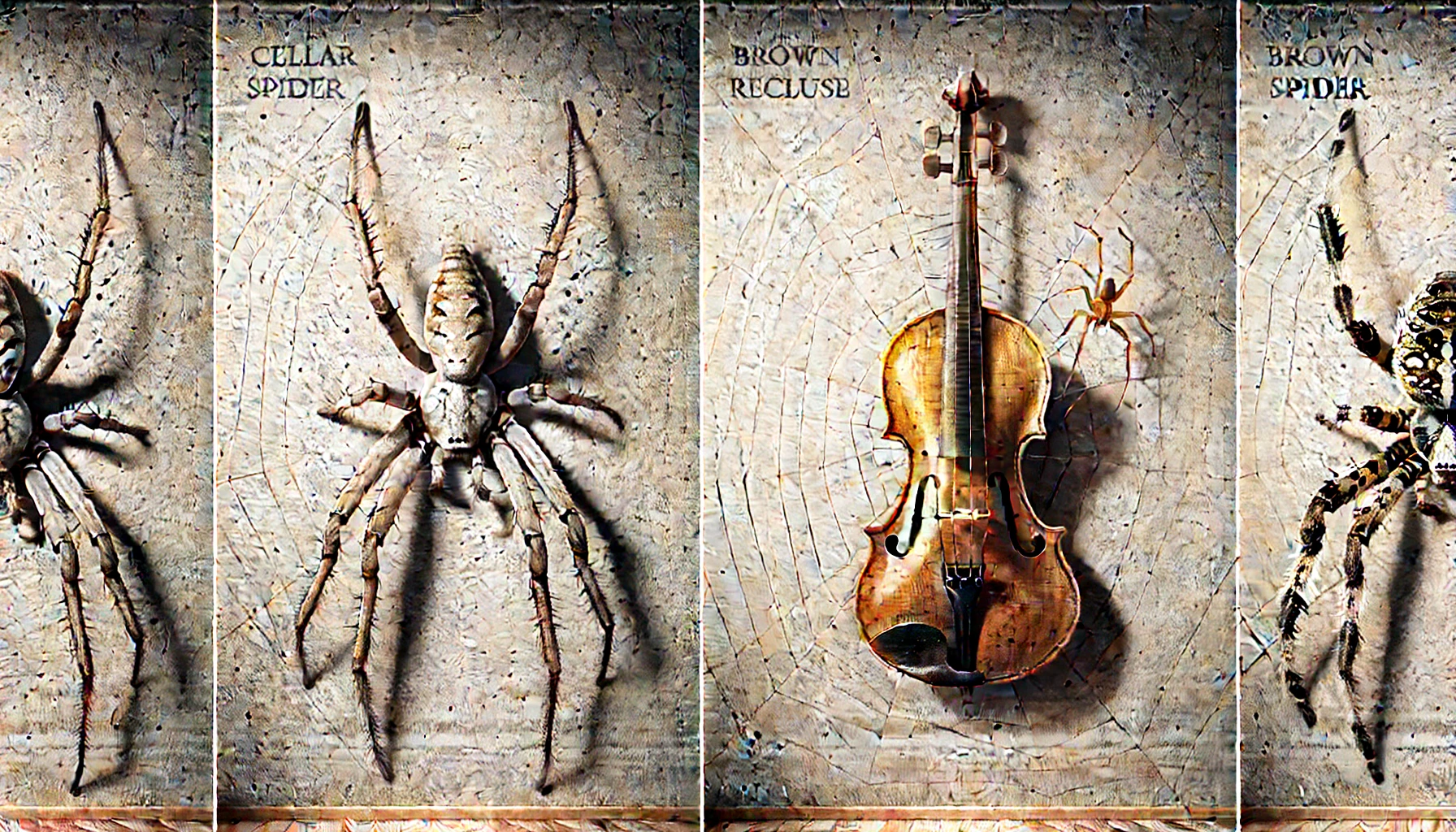Key Takeaways
-
Identification: Cellar spiders have long legs and spin irregular webs; brown recluse spiders have violin-shaped markings and shorter legs.
-
Habitat Preferences: Cellar spiders prefer damp areas like basements; brown recluse spiders seek dry, secluded spots like closets and attics.
-
Health Risks: Cellar spiders are harmless, while brown recluse bites can be venomous and cause serious reactions.
-
Geographic Distribution: Cellar spiders are found nationwide; brown recluses are mostly in central and southern U.S. regions.
-
Prevention & Control: Clean regularly, manage humidity, and seal gaps. Call professionals for severe brown recluse infestations.
 Cellar spiders and brown recluse spiders are two species often confused due to their shared preference for dark, quiet environments. However, understanding the difference between cellar spiders and brown recluse spiders is essential for accurate identification and effective pest control. This article explains how to identify these spiders, their unique traits, and practical steps for managing them.
If you suspect either spider species in your home, our expert pest control services can help you eliminate the problem quickly and safely. Get a Free Pest Inspection Visit today to protect your home from unwanted arachnids!
Cellar spiders and brown recluse spiders are two species often confused due to their shared preference for dark, quiet environments. However, understanding the difference between cellar spiders and brown recluse spiders is essential for accurate identification and effective pest control. This article explains how to identify these spiders, their unique traits, and practical steps for managing them.
If you suspect either spider species in your home, our expert pest control services can help you eliminate the problem quickly and safely. Get a Free Pest Inspection Visit today to protect your home from unwanted arachnids!


Not getting a solution?
Get your free pest control estimate today!What Are Cellar Spiders?
Cellar spiders, often called “daddy long-legs,” applied to other spider critters as they are harmless arachnids commonly found in damp, dark areas of homes and buildings.Key Characteristics of Cellar Spiders
- Imagine a spider with legs so thin they almost look fragile, like tiny threads. Honestly, you’d think a strong breeze could snap them right off.
-
 Appearance: Cellar spiders have small, elongated bodies, which is about quarter – inch ,typically pale yellow, translucent brown, light gray or tan, with long, thin legs which looks almost like hairs.
Appearance: Cellar spiders have small, elongated bodies, which is about quarter – inch ,typically pale yellow, translucent brown, light gray or tan, with long, thin legs which looks almost like hairs. -
 Habitat: These spiders thrive in basements, crawl spaces, and corners of rooms where humidity levels are high.
Habitat: These spiders thrive in basements, crawl spaces, and corners of rooms where humidity levels are high. -
 Behavior: They create irregular webs in corners and ceilings and vibrate in them when disturbed to confuse predators. They are non-aggressive and pose no threat to humans. They are out in the open, hanging upside down in their webs. If disturbed, they’ll start vibrating quickly—almost like doing a little dance. They’re helpful predators, gobbling up more minor pests like flies and even other spiders
Behavior: They create irregular webs in corners and ceilings and vibrate in them when disturbed to confuse predators. They are non-aggressive and pose no threat to humans. They are out in the open, hanging upside down in their webs. If disturbed, they’ll start vibrating quickly—almost like doing a little dance. They’re helpful predators, gobbling up more minor pests like flies and even other spiders

What Are Brown Recluse Spiders?
Brown recluse spiders are venomous spiders known for their distinctive violin-shaped marking and potential health risks from their bites.Key Characteristics of Brown Recluse Spiders
-
 Appearance: These spiders are light to dark brown, with no stripes or pattern, with a compact body and a violin-shaped marking near their head and towards the abdomen. Their six eyes are arranged in pairs. Their legs are short and thick, giving them a sturdier look
Appearance: These spiders are light to dark brown, with no stripes or pattern, with a compact body and a violin-shaped marking near their head and towards the abdomen. Their six eyes are arranged in pairs. Their legs are short and thick, giving them a sturdier look -
 Habitat: Brown recluse spiders prefer dry, undisturbed spaces like attics, closets, and storage areas. Outdoors, they hide under rocks and logs.
Habitat: Brown recluse spiders prefer dry, undisturbed spaces like attics, closets, and storage areas. Outdoors, they hide under rocks and logs. -
 Behavior: They don’t spin obvious webs for catching prey. Instead, they hide away in tiny silken retreats in dark corners. They are active at night, sneaking out under darkness to hunt. They are shy, hiding under furniture, inside boxes, or even tucked into shoes and avoid human contact but may bite when provoked or trapped. Their bites can cause medical complications, including skin necrosis.
Behavior: They don’t spin obvious webs for catching prey. Instead, they hide away in tiny silken retreats in dark corners. They are active at night, sneaking out under darkness to hunt. They are shy, hiding under furniture, inside boxes, or even tucked into shoes and avoid human contact but may bite when provoked or trapped. Their bites can cause medical complications, including skin necrosis.
How Dangerous Are They, Really?
Alright, here’s the part everyone worries about—safety. Brown Recluse Danger Level Let’s be clear—brown recluse spiders are venomous, and their bites can be severe. Their venom can lead to painful reactions, including tissue damage and necrosis. But here’s the thing—these severe bites are actually pretty rare and usually happen only if the spider is accidentally trapped against your skin. Typical symptoms:- Redness and swelling
- Potential blistering or ulcer formation
- Occasionally, fever or chills
- Extremely unlikely to bite. Their tiny fangs typically can’t even penetrate human skin.
- Have you ever heard the myth about daddy longlegs having potent venom but being unable to bite? False.
Geographic Clues: Where Are They Found?
Geography helps a lot in spider identification. Brown Recluse Range- Mostly central and southern states like Texas, Oklahoma, Arkansas, and Missouri.
- Rarely seen naturally beyond these areas, though they sometimes hitch rides in luggage or boxes.
- Nationwide distribution, coast to coast.
- Frequently spotted in basements, garages, attics, and corners.
Signs of Cellar Spider & Brown Recluse
 Signs of Cellar Spider Infestation
Signs of Cellar Spider Infestation
- Webs in corners, ceilings, or near damp areas.
- Presence of small, translucent spiders with long legs.
- Vibrating webs when disturbed.
- Spiders hiding in undisturbed areas like boxes or under furniture.
- Bites on humans that are red, swollen, and potentially necrotic.
- Presence of shed spider skins in hidden areas.
Cellar vs. Brown Recluse Spiders: Comparison
Understanding the difference between cellar spiders and brown recluse spiders helps in accurate identification. Here’s a comparison:| Feature | Cellar Spiders | Brown Recluse Spiders |
|---|---|---|
| Appearance | Light gray/tan, long thin legs | Light to dark brown, violin marking |
| Body Shape | Elongated body | Compact body |
| Webs | Irregular, vibrate when disturbed | Rarely use webs for hunting |
| Health Risks | Harmless | Venomous, can cause skin necrosis |
| Preferred Habitat | Damp, dark areas | Dry, undisturbed spaces |
How to Identify Cellar & Brown Recluse Spiders
 Identifying Cellar Spiders
Identifying Cellar Spiders
- Look for long-legged spiders in damp areas like basements or bathrooms.
- Check for irregular webs in corners or ceilings.
- Observe their behavior; cellar spiders vibrate in their webs when threatened.
- Look for the violin-shaped marking on the spider’s back.
- Inspect dry, undisturbed areas like attics, closets, and storage boxes.
- Monitor for bites on humans that are red, itchy, and possibly necrotic.

How to Control these spiders?
Tips for Managing Cellar Spiders
-
Reduce humidity with dehumidifiers.
-
Seal cracks and gaps around windows, doors, and foundations.
-
Regularly clean and vacuum corners, ceilings, and other hiding spots.
Tips for Managing Brown Recluse Spiders
-
Don’t touch it directly. Instead, trap it with a container or glue trap.
-
Declutter storage areas to reduce hiding spaces.
-
Use sticky traps in suspected infestation areas.
-
Wear gloves when handling storage boxes or firewood.
-
Seek professional pest control services for severe infestations.
Tips to Keep Spiders Away
Want fewer spiders hanging around? Here are some easy tips:- Keep storage areas tidy and clutter-free.
- Seal cracks around windows, doors, and foundations.
- Regularly vacuum and clean corners, ceilings, and under furniture.
- Manage insect populations—fewer bugs mean fewer spiders.
- Store clothes and linens securely, especially in recluse areas.





